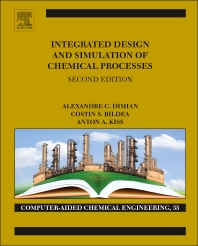Books in Physical sciences and engineering
Books in Physical sciences and engineering
- 2nd Edition
- Michael Blundell + 1 more
- English

The Multibody Systems Approach to Vehicle Dynamics
- 2nd Edition
- Volume 13
- Alexandre C. Dimian + 2 more
- English

Integrated Design and Simulation of Chemical Processes
- 1st Edition
- Donglu Shi
- English

Nanomaterials and Devices
- 8th Edition
- Daniel Zwillinger
- English

Table of Integrals, Series, and Products
- 1st Edition
- Henry Radamson + 1 more
- English

Monolithic Nanoscale Photonics-Electronics Integration in Silicon and Other Group IV Elements
- 1st Edition
- P. E. Irving + 1 more
- English

Polymer Composites in the Aerospace Industry
- 1st Edition
- Daniel Aarno + 1 more
- English

Software and System Development using Virtual Platforms
- 1st Edition
- Stephen J. Fonash
- English

Introduction to Light Trapping in Solar Cell and Photo-detector Devices
- 2nd Edition
- Waqar Ahmed + 1 more
- English

Emerging Nanotechnologies for Manufacturing
- 1st Edition
- Simon Robinson + 2 more
- English

There's Not an App for That